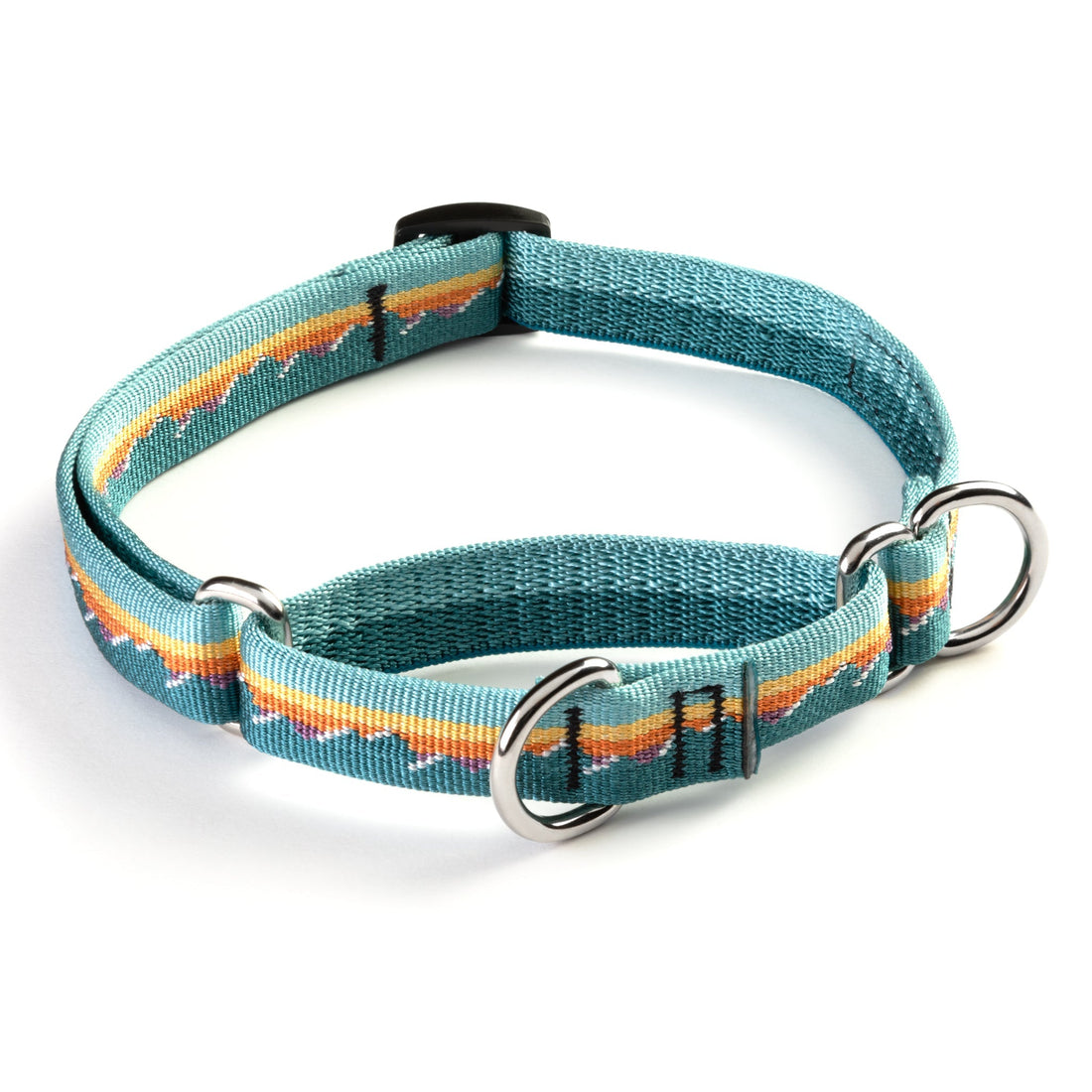
Choosing the Right Training Collar for Your Dog
Compartir
A Guide to Positive Reinforcement and Safe Practices
Training your dog can be a rewarding experience that strengthens the bond between you and your furry friend. However, choosing the right training tools is crucial to ensure a safe and positive learning environment.
What Type of Collar is Best for Training?
When it comes to selecting a training collar, it's important to consider both the dog's comfort and the effectiveness of the training method. Some popular options include:
Flat Collars:
- Ideal for everyday wear, flat collars are gentle on your dog's neck. They are not typically used for training but can hold ID tags.
Martingale Collars:
- These collars are designed to prevent dogs from slipping out without the harshness of choke chains. Martingales are great for training but should only be worn during training sessions and removed afterward to prevent accidental injury.
Side Buckle Release Collars:
- Offering a secure fit and quick release, side buckle collars are versatile for training and daily wear. They are ideal for dog owners who prefer a collar that can be easily removed.
Why Luwello's Collars?
Luwello's Martingale and Side Buckle Release Collars are crafted with high-quality materials, ensuring durability and comfort for your dog. The Martingale collar is perfect for training sessions, providing gentle control without causing harm. However, remember to use it only during training and remove it afterward. The Side Buckle Release collar offers a safe and convenient option for daily use, allowing quick release when needed.
How Do I Choose a Training Collar?
When choosing a training collar, consider the following factors:
Size and Fit:
- Ensure the collar fits snugly without being too tight. Measure your dog's neck and refer to size charts for guidance.
Training Goals:
- Identify your training objectives. Martingale collars are excellent for leash training, while Side Buckle Release Collars offer versatility for various training exercises.
Dog's Behavior:
- Consider your dog's temperament. Some dogs respond well to gentle guidance, while others may require a firmer approach.
Do Vets Recommend Training Collars?
Veterinarians generally recommend training collars that promote positive reinforcement and gentle guidance. Harsh methods, such as choke or prong collars, are discouraged due to the potential for physical harm and negative psychological effects. Martingale and side buckle release collars, like those from Luwello, align with expert recommendations for safe and effective training.
Is a Training Collar the Same as a Shock Collar?
No, a training collar is not the same as a shock collar. Shock collars deliver an electric stimulus to the dog, which can cause pain and stress. In contrast, training collars like the Martingale and Side Buckle Release collars provide control and guidance without inflicting harm. Experts agree that positive reinforcement is a more effective and humane training method than using shock collars.
Is it Better to Train a Dog with a Collar or Harness?
The choice between a collar and harness depends on your dog's needs and behavior. Collars are suitable for dogs that walk calmly on a leash and respond well to training commands. Harnesses, on the other hand, are recommended for dogs that pull or have respiratory issues. Harnesses distribute pressure evenly across the chest, reducing the risk of injury.
When Should You Start Using a Training Collar on a Dog?
Training collars can be introduced once a dog is old enough to understand basic commands, typically around 8-10 weeks of age. Early training helps establish good habits and strengthens the bond between you and your dog. Always use positive reinforcement techniques to ensure a positive learning experience.
Should a Dog Wear a Training Collar All the Time?
No, a dog should not wear a training collar all the time. Training collars, especially Martingales, should be used during training sessions and removed afterward to prevent accidental choking or injury. A regular flat collar or a side buckle release collar is suitable for daily wear.
Can a Dog Wear a Collar and a Harness at the Same Time?
Yes, a dog can wear both a collar and a harness simultaneously. This combination allows for versatility during walks and training sessions. The collar can hold ID tags, while the harness provides additional control and reduces strain on the neck.
When Not to Use a Harness on a Dog?
While harnesses are generally safe and effective, there are situations where they may not be ideal:
Training:
- If the harness encourages pulling, consider switching to a training collar.
Medical Conditions:
- Consult your vet if your dog has specific medical conditions that a harness might exacerbate.
Positive Reinforcement: Building Confidence and Trust
Positive reinforcement is a training approach that rewards desired behaviors with treats, praise, or play. This method builds confidence in dogs and fosters a strong bond between the dog and the owner. Negative training experiences, on the other hand, can cause fear, anxiety, and long-term behavioral issues.
Benefits of Positive Reinforcement
Boosts Confidence:
- Rewarding good behavior encourages dogs to repeat actions, boosting their confidence and eagerness to learn.
Strengthens Bond:
- Positive interactions during training build trust and strengthen the bond between you and your dog.
Reduces Anxiety:
- Dogs trained with positive reinforcement are less likely to develop anxiety-related behaviors.
Expert Opinions on Positive Reinforcement
Animal behaviorists and trainers universally support positive reinforcement as the most effective and humane training method. Studies have shown that dogs trained with rewards and praise are more likely to exhibit desired behaviors and maintain a strong bond with their owners.
Conclusion
Choosing the right training collar is essential for a successful and positive training experience. Luwello's Martingale and Side Buckle Release Collars offer safe and effective options for training and daily wear. Remember, positive reinforcement is key to building a confident and well-behaved dog. By focusing on rewarding good behavior and avoiding negative training methods, you'll create a loving and trusting relationship with your furry companion.
For more information on our products and training tips, visit Luwello.com







